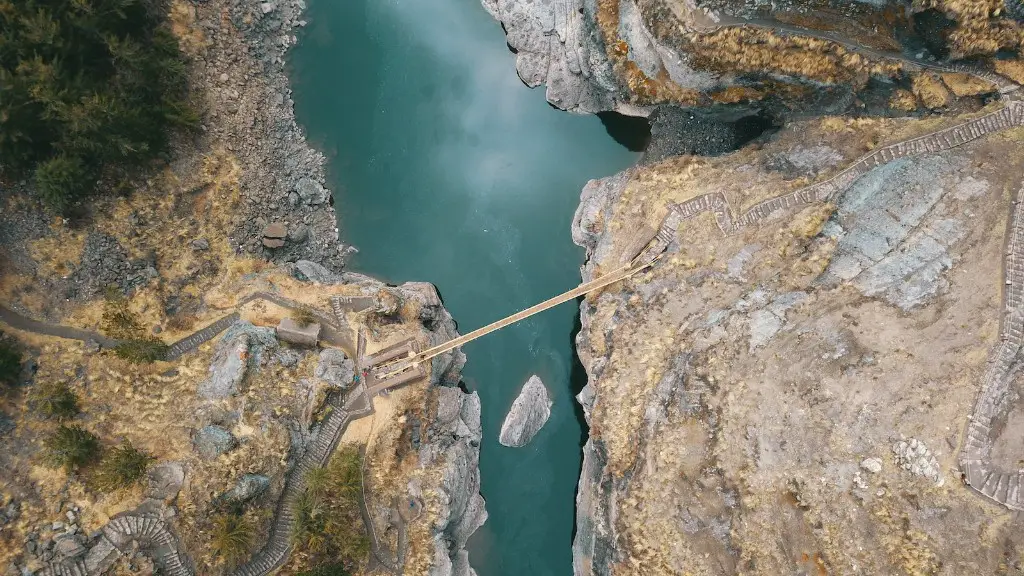Background Information
The Mississippi River Delta is a large, seemingly incomparable delta in the United States, located at the mouth of the Mississippi River in Louisiana. It is the seventh largest delta in the world, covering over 6,000 square miles of marsh, swamps, and wetlands. The Delta is home to a variety of species, including some of the most threatened wildlife species in North America and some of the most productive fisheries in the world. It is one of the most important ecosystems on the continent, providing essential functions such as storm protection, nutrient cycling, and wildlife habitat.
In recent decades, the Mississippi River is beginning to experience dramatic changes that could ultimately affect the entire Delta. As sea-level rise continues to accelerate, combined with human-driven coastal erosion, the Delta is becoming smaller, shifting further offshore, and being threatened by increasing floods, salt-water intrusion, and deteriorating water quality.
Relevant Data
According to data from the National Oceanographic and Atmospheric Administration (NOAA), the Delta of the Mississippi River has shrunk by more than 1,300 square miles since 1932, or 20 percent of its original size. The same data also indicate that the rate of shoreline retreat is accelerating, with major losses observed in the last two decades.
Significant losses of wetlands, which act as a buffer to the rising sea-level, are widely attributed to the construction of flood control systems, diversion of fresh water for agricultural and industrial use, and coastal erosion. In addition, studies have also suggested that climate change has intensified severe storms, leading to further loss of wetlands and other Delta habitats.
Perspectives from Experts
Given the critical role of the Mississippi Delta, many scientists and environmental advocates are sounding the alarm that immediate action is needed to stabilize the Delta and preserve its natural functions. According to Robert Twilley, the executive director of the Louisiana Sea-Grant college program, preventing further destruction of the Delta is “the biggest challenge facing Louisiana.” He further argues that “until we can address the causes of coastal land loss and develop the restoration tools necessary to reverse it, Louisiana will be facing a long and difficult path to resilience.”
Furthermore, many experts believe that a holistic approach is needed to combat the Delta’s decline. According to Jeff Turner, the Water Resources and Marine Fisheries policy director of the National Wildlife Federation, one of these strategies is developing resilient infrastructure, such as levees, coastal restoration projects, and floodplain restoration, that can combat the impact of sea level rise and severe storms. He further states that “we must also confront and reduce the root causes of the Delta’s decline, including unsustainable water management and declining water quality.”
Analysis and Insights
The threat of Delta shrinkage and the urgency of its implications are unfortunately being overlooked by local and federal governments. The economic repercussions caused by further destruction of Delta habitats will be costly for all Americans, and yet, there is a severe lack of decision makers willing to take the necessary steps to protect and restore the Delta.
The local communities, including fishermen and wildlife, are particularly vulnerable and could suffer the most substantial harm if their dependence on the Delta and its resources are taken away. To prevent further destruction of the Delta and maintain its ecological and cultural significance, policies must be implemented to manage the rate of sea-level rise, modernize flood control systems, and increase the freshwater supply.
Enhancing Local Communities
In order to successfully protect the Delta and build resilience to climate change, local communities must be effectively engaged in the restoration efforts. Community-based restoration projects can be an effective and inclusive strategy to not only create meaningful jobs and drive economic development, but also build a sense of ownership and community awareness that can foster a better understanding of the Delta and its importance.
Local educators, policy makers and representatives, as well as scientists and activists, should be involved in creating effective outreach and education programs that can help raise awareness and understanding of the threats to the Delta, as well as promote successful collaboration between local communities, brands and organizations that have a stake in the Delta’s future.
Protecting Land Loss and Wildlife Habitats
Restoration measures, such as coastal wetland vegetation, are becoming increasingly important in reducing erosion and helping to protect structures, shorelines, and habitats from saltwater intrusion and related environmental problems. Additionally, policies that prioritize reforestation, replanting of marsh vegetation, and sediment diversions will help mitigate coastal erosion and support natural flood protection for the Delta.
Preserving the Delta’s various habitats, such as marshes and mangroves, is essential not only for the diverse species of wildlife that inhabit the Delta, but also for preserving the cultural ties between the Delta’s people and the environment. These habitats provide important spawning grounds, migratory pathways, and nurseries for a variety of fish, as well as nesting and feeding grounds for numerous wildlife species.
Restoring Water Quality and Freshwater Flow
Protecting and restoring the Delta’s water quality is essential to creating a healthy Delta ecosystem. This can be achieved through strategic policies that prioritize the reduction of pollutants and the replenishment of freshwater flows, as well as the implementation of water management practices that prioritize the needs of the Delta’s aquatic resources and the people who depend on them.
Studies have shown that maintaining healthy freshwater flow helps reduce salinity, decrease toxic sediment and nutrient overloads, and reduce damage from algae blooms and reduced oxygen levels. Similarly, water quality standards must be enforced to protect these important aquatic resources from the harmful effects of pesticides, industrial waste, and other pollutants.
Engaging the Public
In addition to the strategies for protecting the Delta outlined above, a strong emphasis must be placed on public engagement and education. Establishing public outreach programs that raise awareness about the Delta can be extremely effective in strengthening support for the protection of its natural resources and inspiring locals to participate in Delta preservation and restoration efforts.
Meaningful progress in the restoration of the Delta of the Mississippi River will require the shared responsibility of scientists, managers, local communities and stakeholders, and everyone must take action to safeguard this vital ecosystem. Only by working collaboratively and pooling our resources towards its protection will we be able to ensure the Delta’s continued existence and long-term sustainability.


